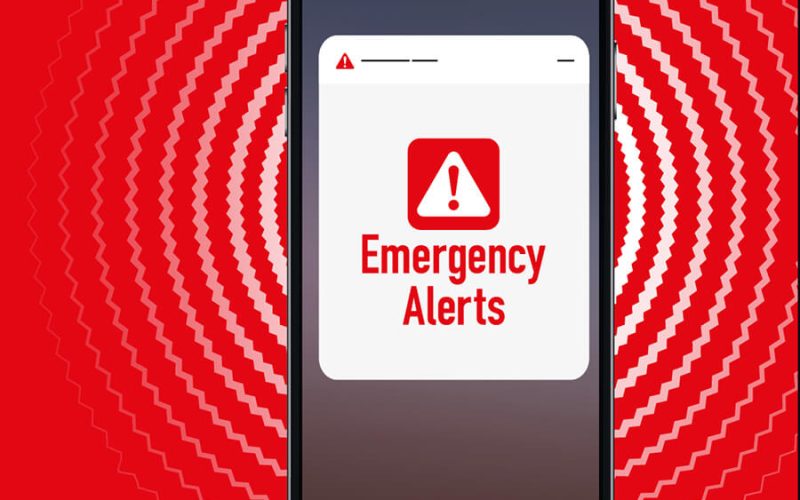In today’s fast-paced world, the ability to communicate effectively during emergencies is crucial for organizations, schools, and businesses. An emergency SMS alert system is designed to provide instant communication to ensure that key stakeholders receive timely and accurate information during critical situations. This article explores how these systems can maximize response time, enhance safety, and improve overall preparedness in times of crisis.
Understanding Emergency SMS Alert Systems
An emergency SMS alert system is a communication tool that allows organizations to send text messages directly to individuals’ mobile phones in the event of an emergency. These messages can range from alerts about natural disasters, safety protocols, medical emergencies, or any situation requiring immediate attention. The immediacy of SMS communication ensures that recipients receive vital information quickly and efficiently.
Key Features of Emergency SMS Alert Systems
- Instant Messaging: SMS alerts can be delivered within seconds, providing real-time information to recipients.
- Automated Notifications: Many systems allow for automated alerts triggered by specific events, ensuring timely communication without manual intervention.
- Two-Way Communication: Some SMS platforms support two-way messaging, allowing recipients to respond or provide feedback.
- User-Friendly Interface: These systems often come with intuitive dashboards that make it easy for administrators to send alerts quickly and efficiently.
- Analytics and Reporting: Many systems offer analytics tools to track message delivery, response rates, and engagement metrics.
The Importance of Timely Communication in Emergencies
Effective communication during emergencies can significantly impact the outcome of a situation. Here are several reasons why timely communication is essential:
- Safety: Quick dissemination of information can help ensure the safety of individuals by providing instructions or warnings about potential dangers.
- Crisis Management: Timely alerts enable organizations to manage crises more effectively, allowing for better coordination and response strategies.
- Public Awareness: In emergencies affecting larger communities, SMS alerts can keep the public informed and help mitigate panic or confusion.
How Emergency SMS Alert Systems Maximize Response Time
1. Immediate Notification Capabilities
One of the primary advantages of an emergency SMS alert system is its ability to send notifications instantly.
- Rapid Deployment: In emergencies, every second counts. SMS alerts can be dispatched within moments, ensuring that recipients receive critical information without delay.
- Wide Reach: SMS messages can reach a large audience simultaneously, ensuring that all stakeholders are informed at the same time.
2. Automated Alerts
Automation is a key feature of modern emergency SMS alert systems, allowing organizations to save time and reduce the risk of human error.
- Trigger-Based Alerts: These systems can be programmed to send automatic alerts based on specific triggers, such as severe weather warnings or security breaches.
- Scheduled Messages: Organizations can pre-schedule alerts for events that are known in advance, ensuring that reminders or notifications are sent out at the appropriate time.
3. Enhanced Communication with Two-Way Messaging
Many emergency SMS alert systems support two-way communication, which can be invaluable during a crisis.
- Feedback Mechanism: Recipients can respond to alerts, providing vital information back to the organization. For example, in an evacuation scenario, individuals can confirm their safety or report their status.
- Interactive Engagement: Two-way messaging allows organizations to engage with recipients, clarifying instructions or answering questions in real time.
4. Targeted Messaging
Emergency SMS alert systems allow for targeted messaging, ensuring that the right people receive the right information.
- Segmentation: Organizations can segment their audience based on location, role, or other criteria, allowing for more relevant communication. For instance, a school could send alerts only to parents of students in a specific area affected by a storm.
- Customizable Alerts: Messages can be customized to suit different audiences, ensuring clarity and relevance in communication.
5. Improved Preparedness Through Training
An effective emergency SMS alert system can also enhance preparedness through training and drills.
- Simulation Drills: Organizations can conduct drills using the SMS alert system to ensure that staff and stakeholders are familiar with the process and response protocols.
- Regular Updates: Training sessions can be supplemented with SMS alerts that remind participants of procedures and provide updates on emergency response plans.
6. Analytics and Continuous Improvement
Monitoring the effectiveness of an emergency SMS alert system is crucial for continuous improvement.
- Response Metrics: Many systems provide analytics on delivery rates, response rates, and engagement metrics, allowing organizations to evaluate the effectiveness of their alerts.
- Feedback Loops: Gathering feedback from recipients after an emergency can help organizations refine their messaging strategies and improve future communications.
7. Compliance and Record Keeping
An emergency SMS alert system can help organizations comply with legal and regulatory requirements.
- Documentation: Keeping records of alerts sent during emergencies can be important for compliance and auditing purposes. SMS systems often provide logs of all messages dispatched.
- Emergency Response Plans: SMS alerts can be integrated into broader emergency response plans, ensuring that organizations meet mandatory communication standards.
Implementing an Emergency SMS Alert System
1. Assess Your Needs
Before implementing an emergency SMS alert system, assess your organization’s specific communication needs.
- Identify Key Stakeholders: Determine who needs to receive alerts (e.g., employees, parents, community members) and what types of messages are most relevant.
- Set Goals: Define clear objectives for your SMS alert system, such as improving response times or enhancing public safety.
2. Choose the Right Provider
Selecting a reliable SMS alert system provider is crucial for successful implementation.
- Research Features: Look for providers that offer the features you need, such as automation, two-way communication, and analytics.
- Evaluate Support: Ensure that the provider offers robust customer support to assist you with any issues that may arise.
3. Build a Comprehensive Contact List
To maximize the effectiveness of your SMS alert system, maintain a comprehensive contact list.
- Opt-In Process: Encourage stakeholders to opt in to receive SMS alerts, emphasizing the importance of participation in ensuring safety and preparedness.
- Regular Updates: Keep your contact list up to date by regularly confirming consent and updating contact information.
4. Train Staff and Stakeholders
Training is essential for effective implementation of an emergency SMS alert system.
- Familiarization: Ensure that staff and stakeholders are familiar with how the system works and what to expect during an emergency.
- Drills and Simulations: Conduct regular drills to practice using the SMS alert system, reinforcing procedures and improving response times.
5. Monitor and Evaluate Effectiveness
Regularly assess the effectiveness of your SMS alert system.
- Track Engagement Metrics: Monitor delivery rates, response rates, and engagement metrics to gauge the success of your alerts.
- Solicit Feedback: Gather feedback from recipients to identify areas for improvement and ensure that the system meets their needs.
Conclusion
An emergency SMS alert system is an indispensable tool for maximizing response time and enhancing communication during critical situations. By providing instant notifications, enabling two-way communication, and allowing for targeted messaging, these systems ensure that organizations can respond effectively to emergencies. As the importance of timely communication continues to grow, investing in a reliable SMS alert system is essential for ensuring the safety and preparedness of your organization and its stakeholders.










